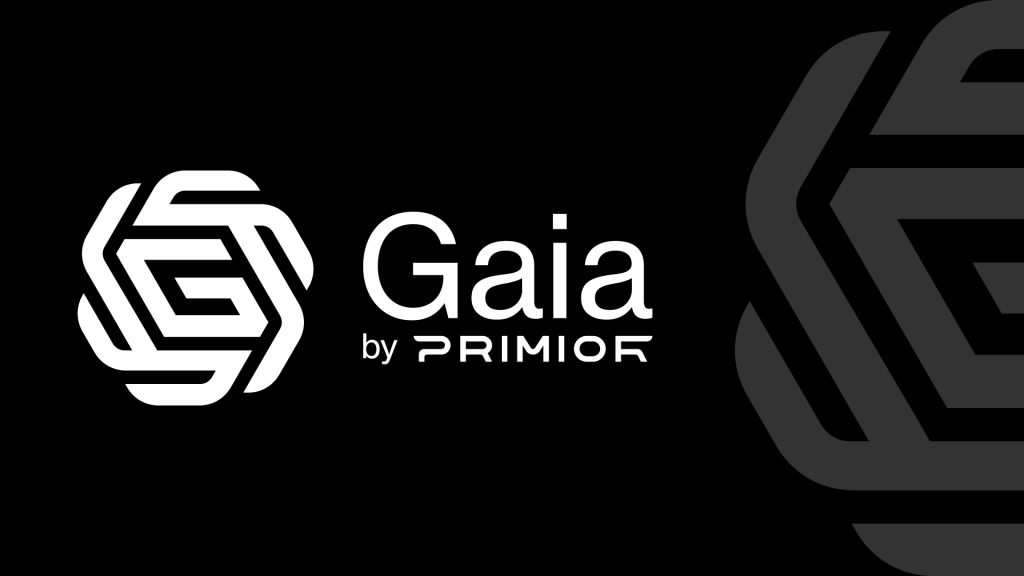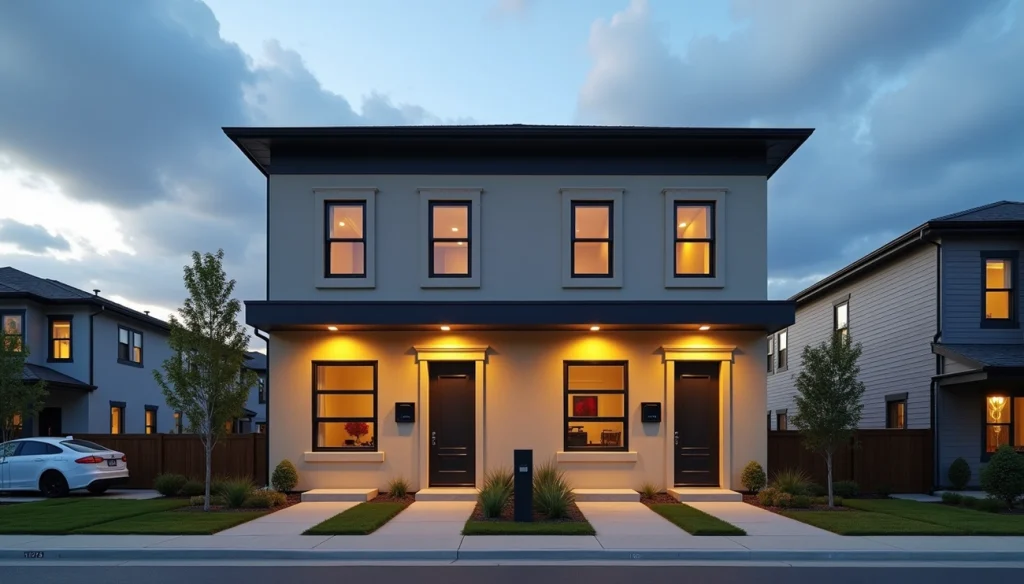The pandemic has transformed real estate investment patterns, and coliving investments have more than doubled. Investors see great potential in this sector and have pledged €2.6 billion for co-housing projects in the next three years.
The market trends support your quest for better-performing real estate investments. A survey shows that 47% of residents choose coliving spaces mainly to cut down their housing costs. On top of that, 72% of tenants are ready to pay extra for shared amenities. This creates new revenue streams that you won’t typically find in traditional real estate.
This piece gets into why coliving properties perform better than traditional real estate investments. The analysis uses market data and performance metrics from 2025. You’ll find how smart space use, high occupancy rates, and growing market interest lead to better returns in the coliving sector.
Understanding Coliving Investment Returns
Space optimization and smart design reshape coliving investment returns completely. The numbers reveal an impressive story about improved profitability and environmentally responsible growth between traditional real estate and coliving properties.
Traditional real estate vs coliving ROI metrics
Coliving spaces generate higher returns by making the best use of available space. Properties that switch to coliving arrangements bring in 40-50% more rental income than traditional apartment rents in New York. These investments deliver rental yields between 6-15%, and this is a big deal as it means that conventional residential property yields of 3-5% are nowhere near as profitable.
Money advantages go beyond simple rental income. Coliving properties fit almost twice the number of bedrooms as similar-sized conventional multifamily assets. These spaces keep occupancy rates between 90-100%, which means steady cash flow year-round.
Key performance indicators in 2025
Several metrics show coliving’s strength as an investment vehicle. Net operating income has grown through better space efficiency and lower vacancy risks. Coliving spaces bring in 44% more income per square foot than regular apartments through higher unit density and shared amenities.
Building costs work in coliving’s favor too. These developments usually cost 25-35% less than traditional office-to-apartment conversions. Lower costs plus premium pricing potential create impressive returns for investors.
Average yield comparison
Regional comparisons show how coliving consistently performs better:
- Sydney: Coliving yields hit 4% annually, beating traditional residential yields of 2.6%
- Hong Kong: Coliving properties bring 3.4% yields versus 2.2% for conventional apartments
- India: Coliving investments reach 10-13% yields, which is way above the 3% average for traditional residential properties
Better profits come from multiple sources. Coliving makes the most of rentable space through private bedrooms with shared common areas. The all-inclusive nature of these spaces, with utilities and furnished units included, supports premium pricing. Flexible leasing options help keep occupancy rates high throughout the year.
Smart operations add to stronger returns. Coliving properties need bigger on-site teams and frequent maintenance, but extra revenue from multiple tenants easily covers these costs. The community-focused model helps keep tenants longer, which stabilizes income streams.
Market projections paint a bright future. The global coliving market should reach USD 15.90 billion by 2025, growing at a compound annual rate of 11.4%. This growth, paired with rising urban housing costs, makes coliving an attractive investment option.
Primior can help you discover the full potential of your coliving investment returns. Their team’s expertise will help you spot properties with the best chance for space optimization and long-term profits.
Why Coliving Properties Generate Higher Returns
Coliving investments offer exceptional returns through their fresh take on property value maximization. These properties generate remarkable profits by reimagining traditional real estate models and creating multiple income streams.
Space optimization and revenue per square foot
Smart space design helps coliving spaces generate higher returns. Research shows these properties earn 23.2% more per square foot compared to traditional studio apartments in similar markets. Coliving developments use creative architectural solutions to make the most of available space. They add lofted sleeping areas, built-in storage, and transformable furniture.
The ALTA development in Long Island City serves as a prime example. Their coliving units generate 44% higher income per square foot than regular apartments in the same building. These units maintain a 30% higher net operating income per square foot, even after adding housekeeping services.
Multiple revenue streams
A coliving property’s income goes beyond simple rent collection. These investments can generate three to five separate revenue streams from tenants. This approach can triple the rental income compared to nearby properties. Additional income sources include:
- Membership fees for exclusive events and amenities
- Mutually beneficial alliances with local businesses
- Coworking passes for non-residents
- Community event hosting and workshop spaces
The shared rent model spreads costs among multiple tenants while keeping individual rates affordable. To name just one example, a three-bedroom house that usually rents for $500 per week can bring in $900 weekly as a coliving space – an 80% increase in rental income.
Lower vacancy rates
Coliving investments stand out from traditional rentals with their high occupancy rates. Short lease terms attract a wider tenant base. Young professionals, students, expatriates, and active retirees find this flexibility appealing. Such diverse market appeal ensures steady demand through economic ups and downs.
Community-focused design leads to longer stays and better tenant retention. The multi-tenant structure keeps cash flow stable during turnover periods. Income continues from remaining occupants when one resident leaves. Many coliving properties achieve 90-100% occupancy rates.
Higher operating costs come with improved services, but increased revenue potential makes up for this. Professional management companies handle tenant sourcing, maintenance, and community engagement. This creates a hands-off investment model that provides passive income.
Would you like to tap into the potential of coliving investments for your real estate portfolio? Book a strategy call with Primior at https://primior.com/book/. Their team will help you find properties with optimal space usage potential and sustainable revenue streams in this faster growing sector.
Market Growth Driving Better Returns
Strong market growth shows the amazing returns you can expect from coliving investments. Urban housing costs keep rising and people’s priorities are changing. This innovative real estate segment attracts substantial capital.
Current market size
The global coliving market reached USD 7.82 billion in 2024. Asia Pacific leads with the largest revenue share at 48.02%. North America makes up 17.9% of the market, while Europe follows at 21.8%.
Budget-friendly options dominate with 53.36% of market share. This number shows a clear need for affordable housing solutions. Students make up the largest group at 29.92%, but working professionals are growing faster than any other group. Experts project a CAGR of 14.4% through 2030 for this segment.
The market stays strong even during tough economic times. Investors keep putting money into coliving. Several factors drive this strength:
- Major cities face ongoing housing shortages
- More people move to urban areas worldwide
- Households become smaller
- People want flexible living options more than ever
Projected growth through 2030
The coliving market will grow remarkably. Numbers show expansion from USD 7.82 billion in 2024 to USD 16.05 billion by 2030. This means a compound annual growth rate (CAGR) of 13.5%.
Different regions show unique growth patterns:
- Asia Pacific stays ahead thanks to quick urbanization and expensive housing
- European markets could grow substantially because major cities face housing affordability issues
- North America grows steadily as more people want flexible living options
Working professionals will lead future growth. Their segment should grow fastest at 14.4% through 2030. This speed comes from new work patterns and young urban professionals’ changing lifestyles.
Supply and demand numbers reveal huge opportunities. London serves as a perfect example. The city just needs 600,000 coliving beds but only has 5,000 available. This massive gap between what people want and what’s available creates room for market growth and investment returns.
Want to learn how you can benefit from this growing market? Book a strategy call with Primior at https://primior.com/book/. We’ll help you find coliving investment opportunities that match your portfolio’s goals.
Risk-Adjusted Returns Analysis
Coliving properties attract institutional investors because of their unique mix of stability and profitability. Foreign investments make up 78% of total investments in this segment. Smart investors aim to improve their risk-adjusted returns.
Investment risk comparison
Multi-tenant structures give coliving investments a clear edge in risk management. Traditional real estate depends on single tenants for income. Coliving spreads this risk among multiple residents. This creates steady income even when some units remain vacant.
The sector’s benefits have caught institutional capital’s attention, leading to aggressive investments. Several key factors drive this appeal:
- Long-term demographic trends supporting sustained demand
- Reliable income generation potential
- Portfolio diversification advantages
Some risks need attention. Cities still struggle to categorize coliving properties, creating regulatory challenges. Managing multiple tenants and shared amenities adds complexity, making efficient systems essential.
Volatility measures
Investment stability depends on understanding volatility. Traditional real estate prices typically fluctuate based on:
- Investor-driven changes
- Market demand variations
- External factors beyond control
Coliving properties show remarkable strength against these volatility factors. Data centers and coliving spaces deliver returns of 16-18%. This is a big deal as it means they outperform core office assets’ 8-9% yield. These numbers highlight the sector’s ability to maintain stable returns.
Multiple tenants naturally reduce income volatility. Revenue continues flowing even when some tenants leave, unlike single-tenant properties. Many coliving properties kept high occupancy rates during market uncertainties, proving their worth.
Institutional investors see these advantages clearly. Their allocation toward alternative assets grew from 55% in 2019 to 75% in 2022. This shows growing faith in coliving’s risk-adjusted return profile.
Smart investors recognize certain challenges. The sector’s youth means limited historical data through economic cycles. Most coliving companies have operated less than 10 years and haven’t faced a complete economic downturn.
The best risk-adjusted returns come from partnering with experienced operators who know:
- Tenant relationship management
- Operational efficiency optimization
- Regulatory compliance requirements
- Market-specific dynamics
Want to learn how coliving investments can improve your portfolio’s risk-adjusted returns? Book a strategy call with Primior at https://primior.com/book/ to explore opportunities in this growing sector.
Success Stories and Case Studies
Ground examples show how coliving investments perform exceptionally in a variety of markets. Both 10-year old operators and innovative startups showcase robust returns and adaptable business models that propel the sector’s development.
Top-performing coliving investments
Badi, a prominent coliving operator in Spain, shows operational excellence by integrating technology strategically. The company saved over 1,400 hours in administrative tasks and reduced costs by €12,000 after implementing advanced supply management systems. This optimization improved their bottom-line profits directly.
The Collective’s high-end coliving residences in London achieved remarkable success by focusing on design and community integration. Their properties keep high occupancy rates because 92% of residents say the environment helps them form friendships naturally.
Common, a leading U.S. operator, proves how well-executed coliving models can adapt and grow. They expanded across major metropolitan areas while keeping premium returns through mutually beneficial alliances and streamlined operations. They succeeded by choosing locations carefully and using innovative design approaches that maximize space.
ROI breakdown examples
A closer look at specific investment cases reveals compelling returns in different markets:
A Queensland coliving property bought for USD 690,000 earns about USD 900 in weekly rental income with a 6.7% rental yield. This is a big deal as it means that traditional three-bedroom houses in the region typically yield only 4.5%.
European markets show impressive results too:
- Paris coliving properties achieve 4% net original yields, versus 2.3% for traditional multi-family assets
- Madrid coliving investments deliver 4.1% yields, compared to 3.5% for conventional properties
Operational efficiency drives these returns. PadSplit transformed a traditional rental property in Orlando into their coliving model and saw significant profit improvements. Their success comes from:
- Smart space utilization
- Lower operational costs with centralized management
- Steady cash flow from high occupancy rates
- Better tenant satisfaction leading to longer stays
New York City’s coliving spaces earn 40-50% more rental income than traditional apartment rents. This premium stays strong even during market downturns, shown by 23.2% higher per-square-foot returns compared to conventional studio apartments during recent economic challenges.
The Co-Own Co. in Denver takes a fresh approach. Investors can buy shares of units with private bedrooms and bathrooms. This model helps smaller investors participate while earning attractive returns through efficient space use and community-focused amenities.
These examples highlight how professional management and strategic positioning maximize coliving investment returns. Want to see how your portfolio can benefit from this high-performing asset class? Book a strategy call with Primior at https://primior.com/book/ to explore opportunities in thriving coliving markets.
Conclusion
Smart real estate investors see coliving investments as an exciting chance to grow their portfolios. The numbers tell a clear story – rental yields reach 6-15% while traditional properties only deliver 3-5%. These better returns come from smart space usage, multiple income streams, and properties that stay consistently full.
The market shows strong signs of growth. Experts predict it will reach USD 16.05 billion by 2030. Big institutional investors already see what’s coming. They keep putting more money into alternative assets and look to coliving properties to get better returns for their risk.
Your property portfolio can grow stronger with this new type of asset, especially when you have rising urban housing needs. Primior can help you find the right coliving investments that line up with your money goals. Their team knows how to spot properties that give the best returns through optimized spaces and steady income streams. Let’s talk strategy – book a call at https://primior.com/book/.















